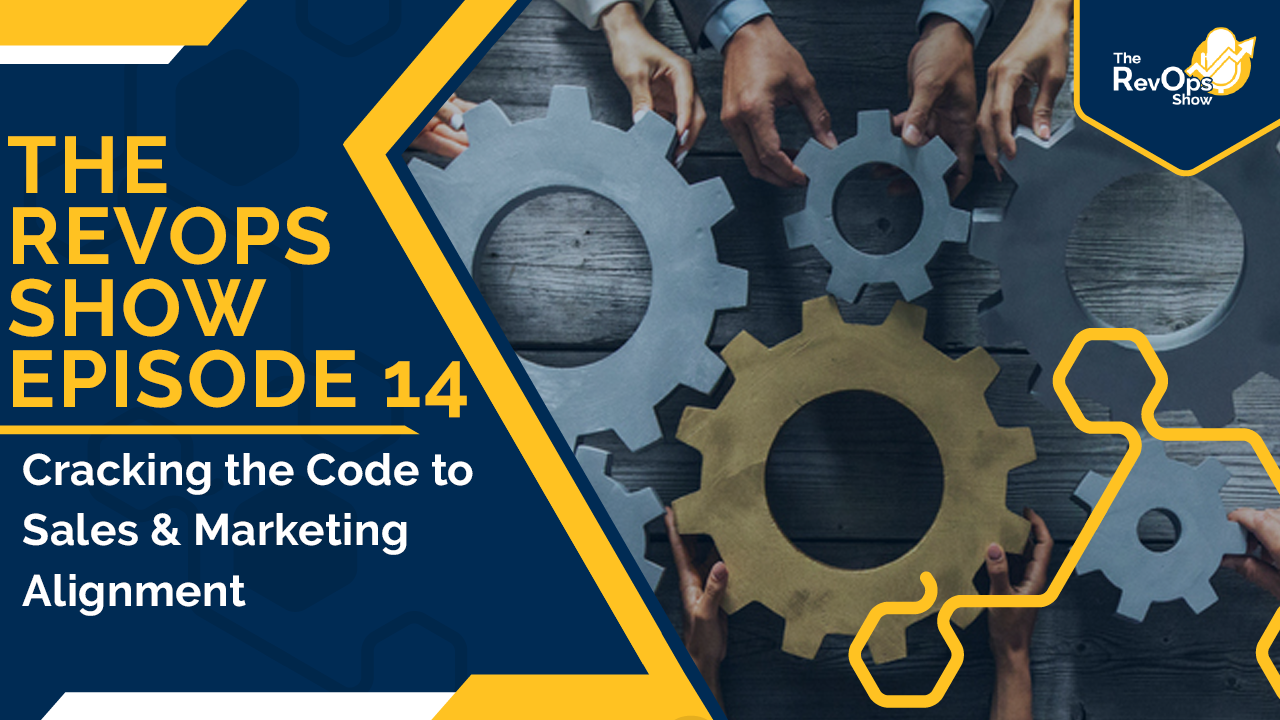Jess is working through Doug’s greatest hits, and today is one he’s excited to talk about - alignment and specifically alignment between sales, marketing, and success. On top of it, Doug has something new that he’s going to bring up on the subject, so you definitely want to listen in for that insight.
Audio:
Video:

Additional Resources:
Show Notes:
Why is alignment important?
Doug flips it back to Jess to ask her why it’s important and her response, “Because it is.” To her it’s important because it avoids bad frustration and confusion. It makes sure that everybody is striving toward the same outcome.
Doug jumps in because what she just said about alignment is the same thing a lot of people say about alignment. Alignment doesn’t avoid bad frustration. If you play to win, the only thing that can be promised is that you’re going to lose at some point.
Is alignment a myth?
Is the horizon a myth? No. The same thing is with alignment; it’s an abstract concept. The horizon doesn’t actually exist. There is no literal place where the sky meets the earth. It’s a concept.
Doug’s issue with alignment is that it is a byproduct and happens as a result of things. There are photos of alignment where everyone is going in completely different directions and then the idea of alignment is that everyone is going in the same direction. You don’t want everyone going in the exact same direction. Why? There’s no diversity or perspective. There’s no innovation, there’s no creation.
Being successful in business isn’t about being right. It’s about being right on the same thing. When we talk about alignment between sales, marketing and success, Doug’s question is, “Why are we only aligning between sales, marketing, and success?” There are many other aspects of a business that are required to work well to win, so why aren’t we aligning those?
Doug thinks when you look after the fact and you look backwards, you can say that the team and the organization was aligned. There are times where organizations can feel in flow. When you’re in alignment and there’s no bad frustration, or no disagreement or no argument, you aren’t really aligned.
Henry Ford said if no one disagrees here, then you’re not needed. There’s going to be disagreement, there’s going to be passionate debate, and it’s going to be frustrating. Sometimes you aren’t going to get your way and things aren’t going to turn out your way.
Doug thinks the myth around alignment is the experience that we have. We have this artificial myth of skittles and rainbows. It goes back to why is it important? What’s the job to be done?
Here’s the new thought: when people talk about alignment, the way they approach it is they approach it in the how, the methodology. They see it as everyone is in lockstep, one behind the other. That’s not where alignment comes from. The problem with alignment is that the moment something happens, it’s unexpected and no one has any idea what to do.
Resiliency, robustness, and vitality comes when there’s alignment in objective, alignment in destination, and when everyone is clear on the objective. In understanding constraints like alignment around destination and context, it frees the genus and the diversity.
This also creates greater agency because you are in control. Where we need to spend more time aligning is on the objective. Where we tend to spend more time is complaining about methodology and individual action. Here at Imagine Doug asks people why they did something a certain way because he wants to make sure that he’s assessing the intent.
If we’re going to talk about alignment it should be about aligning to the market and aligning to the customer. If we’re aligned to the customer, then by definition we have alignment, but we spend far too much time pursuing this idea of internal alignment. We should be creating a high context culture where everyone has an understanding of where we’re going, the goal, and the ideal outcome.
We have the tendency to talk about business in the lens of chess, but chess is a game of perfect information. THe truth is we’re not playing chess, we’re playing poker. Poker is a game of imperfect information. And business is an infinite game. Doug isn’t anti-alignment, he’s anti- what conjures up in people’s minds.
If you’re feeling a lack of alignment, that’s a symptom. It’s neither a problem nor a cause. If you feel like alignment is the issues, there’s probably something else wrong, but it’s not alignment, so don’t focus on it. The issue could be a lack of context or a lack of capability.
Where does RevOps come in?
RevOps is the context police. Their job is to look at where the context is and where it’s moving. RevOps ends up serving a compliance role, and RevOps is correcting when they should be creating context. They should be reducing friction in some places and increasing it in others to provide nudges and guides. The best thing RevOps can do is to think probabilistically, not deterministically.
Next Steps:
-
Follow Jess, Doug & Imagine on socials for updates on the show or other insights:
-
Doug Davidoff: Twitter - @dougdavidoff | LinkedIn
-
Jess Cardenas: Twitter - @JessDCardenas | LinkedIn
-
Imagine Business Development: Twitter - @DemandCreator | LinkedIn
-
-
Subscribe to the show on Spotify & Apple Podcasts
-
Check out Let's Play RevOps on Twitch for more commentary on this topic
